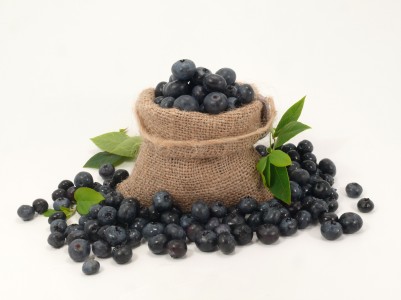Bilberry - Vaccinium myrtillus L.

Common Names: Bilberry, European Blueberry, Wild Blueberry, Vaccinium myrtillus, Myrtillus, Whortleberry, Dyeberry, Huckleberry (Europe), Blaeberry, Black-heart, Trackleberry, Airelle, Heidelbeere, Blaubeere, Scandinavian Blueberry
Latin Name: Vaccinium myrtillus L.
Origin: Asia, Europe, North America
Short Introduction
Vaccinium myrtillus L., also known as Bilberry, can be cultivated in your own garden. It can be propagated by hardwood cuttings. Simply go to the forest at the turn of March and April, cut a roughly 10 cm long cutting from a mature Bilberry plant, and root it indoors at a temperature of about 20°C. For optimal rooting, prepare a mix of 1 part sand to 3 parts peat, or pine leaf mold as an alternative to peat. Once the cuttings have rooted, strengthen them until winter, then transplant into pots for overwintering. In spring, plant them outside with the root ball intact.
Detailed Description
Bilberry is not just delicious in pies—it's an exceptional superfood, known for lowering cholesterol, delivering potent antioxidants, and supporting overall wellness!
Botanical Information
Bilberry grows natively in our forests and can be harvested from July to September. This small shrub reaches up to 45 cm in height and features tiny, rounded leaves. The fruit, known as bilberries, are dark blue to purple, pea-sized berries filled with richly colored juice. The plant pigment anthocyanin gives bilberries their deep blue-purple color, which can be stubbornly difficult to wash off teeth, hands, and clothing. Bilberry plants often form dense carpets in the forest undergrowth. Unfortunately, methods such as mechanical picking ('combs') used by commercial gatherers can damage these precious shrubs—another reason to value and respect this remarkable little plant.
Origin and Distribution
Bilberries have been used for thousands of years in both traditional medicine and household kitchens, adding flavor to meals, syrups, jams, and juices. The plant originated in Asia and has gradually expanded across Europe, now thriving throughout the continent. It is also found in northwestern America and parts of Asia.
Usage / Dosage
Vaccinium myrtillus is renowned for its diverse culinary and medicinal benefits. Bilberries help lower cholesterol and support weight loss efforts due to their natural fruit sugars and minimal fat content. The berries are traditionally used to help treat diarrhea by firming the stool and are commonly recommended for digestive upsets. Regular consumption is also seen as a preventative against cancer, with bilberries' rich plant compounds protecting cells from degeneration and free radicals. Their antioxidant properties help cleanse the body, support longevity, and promote better health.
Bilberries are also famed for improving night vision and supporting eye health—for those wanting 'cat-like' vision, eating bilberries is a natural recommendation. Additional benefits include strengthening the immune system, managing stress, calming effects, and standing out as one of the world’s best antioxidants. Bilberry fruit also has diuretic and anti-inflammatory effects, making it suitable for those with edemas or urinary tract inflammations.
The leaves contain glucokinins (myrtillin), so leaf tea is traditionally used to help stabilize blood sugar levels. Leaves are also rich in tannins, making them ideal for preparing teas used internally for diarrhea, stomach discomfort, or urinary tract inflammations.
Active Compounds
Bilberries contain antioxidants, tannins, anthocyanin pigments, provitamin A, B-group vitamins, carotenoids, fruit sugars, potassium, iron, copper, manganese, magnesium, chromium, and trace amounts of fat in the berries.
Traditional Dosage
For dried bilberry fruits, the recommended dosage is 1 teaspoon three times daily.
When using fresh bilberries in cakes and food, add according to taste.
Bilberry Extract Tip:
Pour a quarter liter of boiling water over 2 tablespoons of dried bilberries, let cool completely, and use the infusion to treat irritated skin, burns, eczema, and scalds by applying to affected areas.
Bilberry Tincture Tip:
Place dried bilberries in a sealable glass jar, cover with plum brandy, and store in a dark place at around 20°C for two weeks. After two weeks, strain the tincture. Take 1 teaspoon internally for colds. For diarrhea, dilute the dose with water. If the taste is too strong, drop the tincture onto a sugar cube before consumption.
